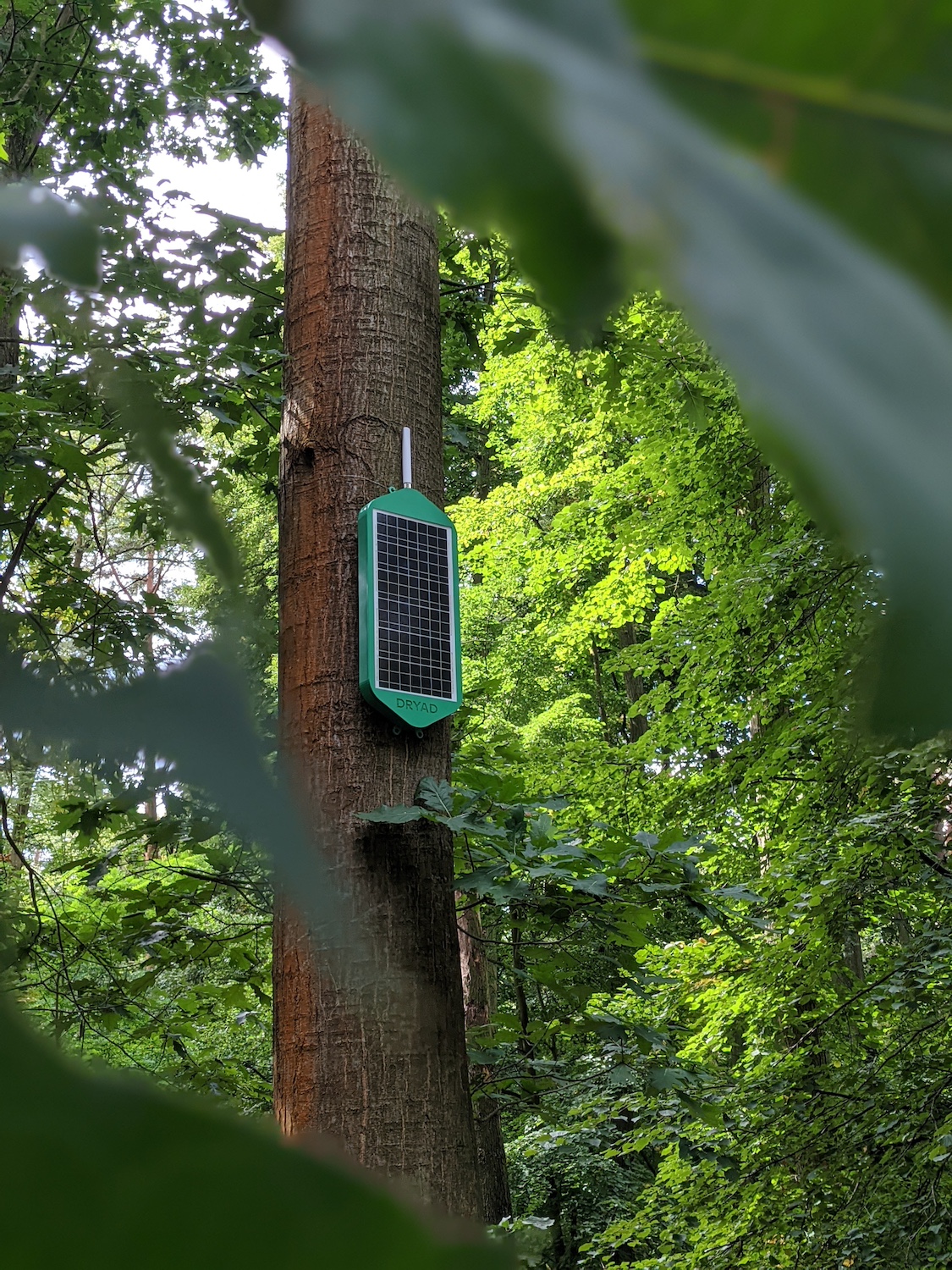
Carsten Brinkshulte, Dryad Networks CEO, holds one of the startup's wildfire sensors next to one of its wildfire response drones. (Image courtesy of Dryad Networks.)
German wildfire technology startup, Dryad Networks, is using artificial intelligence (AI) and drones to detect wildfires as quickly as 10 minutes after they ignite.
The fastest-spreading wildfires are often the most destructive, and detecting them quickly can make all the difference. “In other situations and with other solutions, it sometimes can take several hours before a fire is detected,” Carsten Brinkshulte, CEO of Dryad Networks, told TriplePundit. “In that point in time, when the firefighters arrive at the scene, the fire will already often be out of control and very difficult or impossible to contain.”

The startup’s solution, a system called Silvanet, is a web of technology that works together to detect and locate wildfires across vast, remote areas — even off-grid — and sound the alarm when one starts. The first step is installing Silvanet gateways, tiny devices placed on trees that use radio and satellite to create a communication network across the forest.
The second component is solar- and AI-powered sensors. Also installed on trees, the sensors identify gases like hydrogen and carbon monoxide and monitor conditions like temperature, humidity, and air pressure to detect fires as soon as they start smoldering. When a fire is detected, the sensors use the communication network created by the gateways to alert local firefighters of the location through an email or text message.
As the Silvanet fire-detection system expands to different locations, it can learn to recognize their unique smells to produce more accurate alerts, Brinkshulte said. The smell of burning pine trees is different from that of eucalyptus trees, for example.
Customers can send samples of leaves and twigs from their local environment to the company’s laboratory, where they are burned and used to train the AI to recognize the correct scent. The process dramatically reduces false alarms, a problem all fire detection systems can have, Brinkshulte said. “The system automatically self learns to prevent false positives.”
Recently, Dryad Networks unveiled its Silvaguard drone system, which can autonomously respond to wildfire alerts. The drones wait in solar-powered hangars and can be dispatched by the fire-detection system to investigate and provide firefighters with imagery. During a demonstration event in Eberswalde, Germany, the Silvanet system detected a controlled fire and sent a drone to the location. Upon arrival, the drone accurately pinpointed the fire’s location and size. Eventually, the startup plans to have the drones autonomously extinguish fires before they have a chance to grow.
Both detecting and extinguishing a fire within 10 minutes of ignition is the vision Dryad Networks is working toward. But for now, just detecting wildfires right away gives emergency workers an advantage in minimizing damage. For example, in 2023, alerts from a different wildfire sensor in Colorado gave emergency crews a 37-minute head start before the first 911 call about the fire was made.
“We all know wildfires are very dangerous and spread extremely fast once they spin out of control,” Brinkshulte said. “Once the tree crowns themselves are on fire, then it becomes often very difficult or even impossible to extinguish the fire. When Silvanet is involved, and we detect fires within minutes when they are still very small, it can mean literally the difference between a rogue campfire and a catastrophe that can wipe out towns or entire regions."

Rasha is a freelance writer with experience in communications, marketing, and program management. She is a Toronto Metropolitan University's School of Journalism graduate and has worked on various media and communication campaigns across both nonprofit and private sectors. Rasha is passionate about storytelling for impact, whether she focuses on social enterprise, transforming our food system or making the business world more inclusive.














